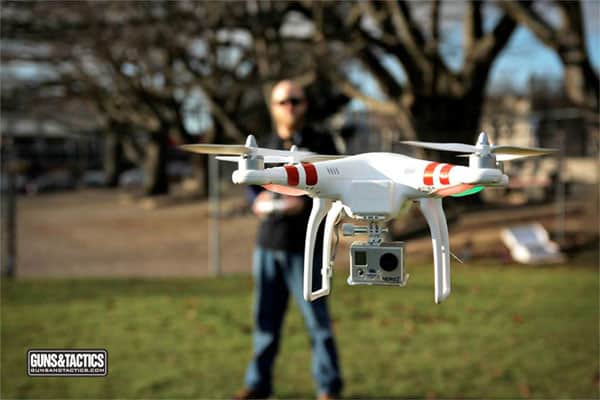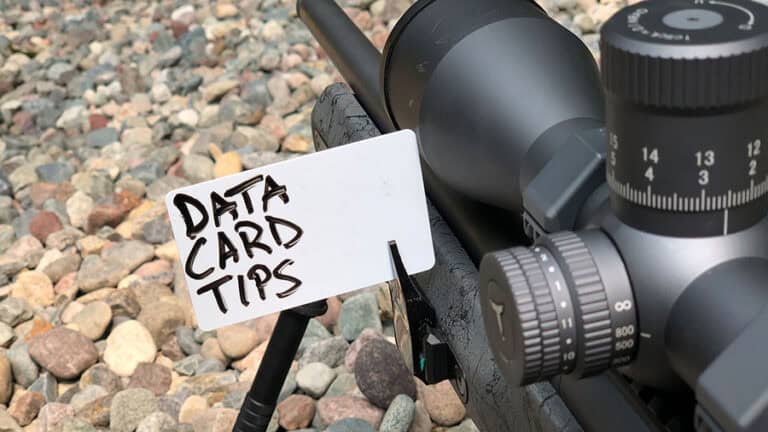SureFire SOCOM-4 Series—A New Fighting Suppressor
Fountain Valley, CA—SureFire, LLC, manufacturer of the world’s finest—and most innovative—illumination tools and…
Fountain Valley, CA—SureFire, LLC, manufacturer of the world’s finest—and most innovative—illumination tools and…
Shinenyx—creators of a cutting-edge fusion of digital night vision and thermal imaging technology—has…
German Precision Optics’ Passion APO is a high-performance compact spotting scope designed and…
The Mod-Navy Qual I’ve been doing this qual (or drill, or whatever the current nom…
• Built for road trips and off-road use• Manual transmission equipped• Wrapped in MultiCam Arctic…
I designed the Button Man to give shooters a low-round-count, low-light-engagement drill that involved both…


The Federal Aviation Administration has restricted the use of unmanned aircraft systems. How does this affect media and press entities?
With only three days left to the kick-off of the 2014 NSSF SHOT Show in Las Vegas marked by the always-exciting Media Day on the Range, the TACOPS Media drone used for aerial photography and videography has been grounded by the Federal Aviation Administration. An FAA Fact Sheet released on January 6 laid out a list of points related to the use of what have been formally designated as Unmanned Aircraft Systems (UAS) and Small Unmanned Aircraft Systems (sUAS) and word has quickly spread through the aerial video and photo industry that all RC flight across US airspace has been restricted unless strictly personal, recreational use.
This came as a bit of a blow to the industry as well as to this author, who has been working with the popular DJI Phantom Dronefly specifically in preparation for deployment on the firing line at Media Day on the Range to capture a unique aerial perspective in both photo and video. While the absence of regulation regarding journalistic and non-profit use of UAS has led to a climate of ambiguity among photographers and videographers that do not profit directly from their application of this emerging technology, one recent industry article suggests that the FAA is proactively shutting down the use of these aircraft pending the establishment of federal regulations.
A lengthy follow-up conversation with Dennis Fogarty of the Western-Pacific Standards Division of the FAA based in California confirmed that not only is the use of any UAS for commercial video production restricted at this time, but that this is clearly inclusive of journalistic efforts, non-profit projects and any other application which does not adhere to recreational hobby use. While it is unsurprising that federal regulation is lagging in response to evolving technologies and practices, the process of developing the regulations relating to UAS and sUAS is well under way. Test sites have been established across the country as various factors are considered in the operation of unmanned aircraft, the qualifications and potential certification of unmanned aircraft operators, and the effect that this growing segment will have on other airspace traffic. As reported by the FAA and confirmed by Mr. Fogarty, the process will continue to progress over the coming months and is projected to produce a functioning framework for regulation before the end of this year, 2014.
While it certainly makes sense to regulate higher-altitude UAS operation due to airspace, it’s hoped that the current hobby regulations will provide adequate framework when establishing new rules. These currently include a limitation to fly below a 400 foot ceiling and communicate with the proper airport operator when flying within 3 miles of an airport. Understandably, one of the primary focuses of the new regulation will address the commercial use of both larger UAS – which are typically used for mapping and advanced video production – as well as sUAS which are quickly growing in popularity with many uses including lower-level media production, marketing, journalism, agriculture, education, event coverage, etc.

Undoubtedly, the bureaucratic process of establishing regulations that will adequately protect the public from both safety risk as well as privacy concerns, while ensuring the freedom and ease of commercial and non-governmental use, will take some time to roll out. Through this process, we will continue to report on updates and will engage in the feedback process to provide media perspective to those who will ultimately write the rules for commercial UAS deployment. Stay tuned!
Joshua Haarbrink is a consultant and traveler with a diverse background including more than 10 years of experience in loss prevention, surveillance, security services and fugitive recovery, as well as various creative writing and editing projects and other unique professional adventures. He is a shooting enthusiast and regular contributor to Guns & Tactics Magazine.

Walk The Talk America is honored to have received a generous donation of $10K from one of America’s leading firearms distributors, Lipsey’s®.

Hawke Optics is happy to announce that they will be attending SHOT Show 2022, January 18-21 in Las Vegas, NV.

Precision rifle data cards, We go over some options for mounting a data card, a slick easy card holder, and ways to write on the card.
Nine Line Apparel is once again offering SIG fans a new line of t-shirts, long-sleeve shirts and hoodies for a limited time.

Team Federal congratulates its team members Kayle Browning and Derrick Mein for their medal performances in Trap at the ISSF World Cup.
[dcs_img_right framed=”black” w=”250″ h=”45″] http://gunsandtactics.wpengine.com/wp-content/uploads/2012/03/crimsontracelogo.jpg [/dcs_img_right] Wilsonville, OR – Crimson Trace today announced plans for the introduction of a powerful, 100-lumen weapon light for the 1911 handgun, available…
© 2025 UN12 Magazine
© 2025 UN12 Magazine
Wait! Don’t forget to